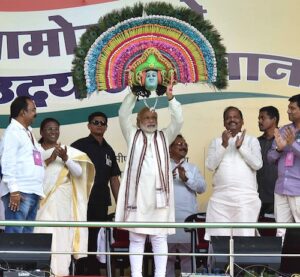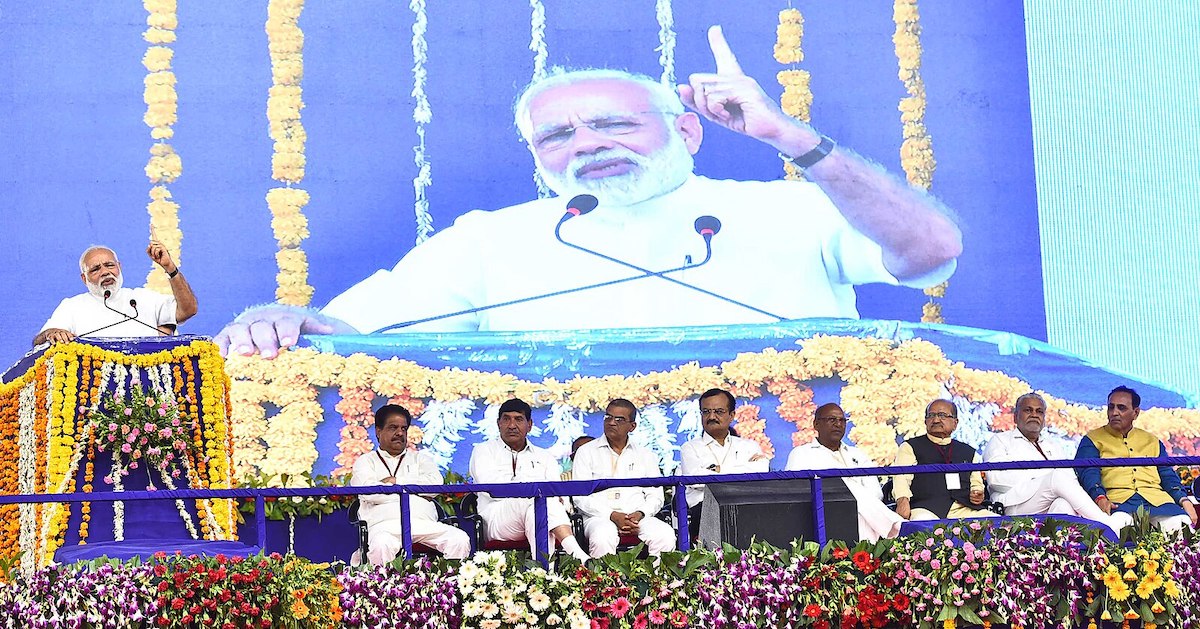Law? What law?
“The MoU will be signed very soon between the Ministry of Culture and its American counterpart…And, we have worked out all the modalities.”
Union Culture Secretary Govid Mohan at the August 2023 G20 meeting in Varanasi, India[1]
“… the US Embassy in New Delhi told The Indian Express, “We are eager to conclude a bilateral CPA, which would help to prevent illegal trafficking of cultural property from India to the US…” “When objects are seized and forfeited under import restrictions created by the CPAs, there is a simplified process for returning objects to the partner country. The partner country does not have to prove the item is theirs. Rather, the United States automatically offers it to them for return,” the US Embassy spokesperson said.” The Indian Express, November 27, 2023.[2]
The Department of State announced in Decemberthat it had received a request from the government of India on September 12, 2023 for cultural property import restrictions on ethnological and archaeological materials. Testimony can be submitted in writing by January 22, 2024 and via Zoom at a Cultural Property Advisory Committee meeting on January 30, 2024. (See below.) However, it’s uncertain who will be listening. For the last year, at domestic rallies and international conferences, Indian politicians have announced that a U.S. agreement enabling the Indian government to more easily seize Indian objects and repatriate them was ready to be signed. Indian newspapers by the dozen have announced the Modi government’s cultural and diplomatic coup.
There was not the slightest pushback to these claims from the U.S. State Department. In fact, the pending Indian agreement is the latest example of the State Department’s Bureau of Educational and Cultural Affairs’ aggressive usurpation of cultural policy as a diplomatic tool, in direct contradiction to the policy and process set forth under the governing U.S. law, the 1983 Cultural Property Implementation Act (CPIA).
Only a few, well-merited agreements covering serious situations of looting were signed under the CPIA between 1983 and 1999, when the law was administered by the U.S. Information Agency. Between 2000 and 2016, after the State Department took over administration of the CPIA, the number of countries with import restrictions quadrupled. Since 2017, the number of countries whose art and artifacts are blocked from U.S. entry under the CPIA has doubled again, to more than thirty nations, many of which use their domestic cultural policies to damage the interest of religious and ethnic minorities. It is not the looting in these countries that matters, but the smoothing of diplomatic relations. U.S. interests in art are being traded off for military, oil and other agreements.
The announcement also shows the influence of a U.S. entity, the Antiquities Coalition, whose absurdly exaggerated tales about a multi-billion-dollar illegal antiquities market and claims about the market’s ties to crime and terrorism were debunked years ago in analyses by the Rand Corporation and others. In June, the pending India agreement was celebrated during a state visit by Modi to the U.S. The Antiquities Coalition’s executive director Tess Davis was invited to both the Welcome Ceremony and State Luncheon for Modi.[3]
(For more on the Rand Corporation analysis, see RAND Corp Report Demolishes Assumptions on Antiquities and Terror, CPN, July 30, 202 and Bearing False Witness: The Media, ISIS and Antiquities, 2017, Art and Heritage Law Report, by Katherine Brennan and Kate Fitz Gibbon.)
The Cultural Property Implementation Act enables India to request that the U.S. halt importation of currently looted objects; the request must be vetted and recommendations voted on by an expert, supposedly independent committee after hearing public testimony.
An agreement can be made only if India’s government is actively working to protect and preserve its cultural property.
A major 2013 report by India’s Comptroller and Auditor General prepared for India’s Parliament placed responsibility for the destruction of Indian monuments and heritage on incompetence, neglect, and indifference within the Ministry of Culture and the Archaeological Survey of India, not on looting.[4]
A 2022 follow-up report found only “ad-hoc” conservation works at monuments and heritage gardens, nine years of inspections completed at only 31 out of 3,693 key nationally recognized monuments, very low expenditure on excavation and exploration, and a worsening of 2016’s already chronic 29% vacancies at the Archaeological Survey of India. [5]
U.S. law prohibits the President from signing an agreement unless it would be a substantial help in deterring a serious situation of pillage today. There is no evidence that pillage, not neglect, is responsible for the damage to Indian monuments.
Crucially, a Memorandum of Agreement can be considered only after a public hearing before the Cultural Property Advisory Committee and the submission of testimony by U.S. stakeholders – museums, collectors, archaeologists, art dealers and the public. For years, museums and the public have been denied the information they need – the import restrictions sought, the dates and types of objects covered – to provide informed testimony on proposed agreements.
This week’s announcement makes a mockery of the intent of Congress and undermines the integrity of the State Department’s Bureau of Educational and Cultural Affairs (ECA). More than a year after the Indian press and politicians have shouted out the news about this ‘done deal,’ the American public is finally invited to be heard – but only for 5 minutes each during the one hour allotted for public testimony before CPAC by the State Department.
Kate Fitz Gibbon, Editor, CPN.
CPAC to Consider New MOU with India and Renewal of MOU with Algeria
By Peter K. Tompa

The Prime Minister, Shri Narendra Modi being presented the ‘Chhau Mask’ as memento.
The State Department has announced that the Cultural Property Advisory Committee (CPAC) will meet on January 30-February 1, 2024, to consider a request for the United States to enter into a cultural property MOU with the Republic of India. According to the Federal Register notice, public comments and requests to speak are due no later than January 22, 2024, for the public session which will take place from 2:00-3:00 PM on January 30, 2024. CPAC will consider a renewal of the current MOU with the People’s Democratic Republic of Algeria at the same time.
The Cultural Heritage Center’s website should hopefully provide some clarity of the scope of the Indian request in the near future. Import restrictions associated with the current MOU with Algeria already encompass a wide variety of ancient and early modern coin types. They also cover, at least implicitly, the cultural heritage of displaced Jewish and Christian minority populations.
The Indian request should raise a number of questions given its likely breadth. First, are all the listed archaeological objects not only of “archaeological interest” but of “cultural significance,” and do they meet the governing statute’s 250-year threshold? Convention on Cultural Property Implementation Act, 19 USC Section 2601 (C)(i)(I)(II). Second, are all the listed ethnological objects really the products of “tribal or nonindustrial society” “that are important to the cultural heritage of a people because of its distinctive characteristics, comparative rarity, or its contributions to the knowledge origins, development or history of that people?” 19 USC Section 2601 (C)(ii)(I)(II).
Third, has India taken “measures consistent with the [1970 UNESCO] Convention to protect its cultural patrimony” under 19 USC Section 2602 (a)(1)(B), when concerns have been raised about India’s notoriously poor stewardship of its own cultural heritage, including not only neglect, but outright destruction of Muslim and Christian minority cultural heritage.
Finally, does the State Department intend to recognize the rights of India’s sectarian Hindu government to ownership and/or control of the cultural heritage of today’s minority Muslim, Christian and Jewish communities? While India is a democracy, these groups have nonetheless suffered discrimination and have even faced occasional pogroms. In particular, Muslim and Christian places of worship have sometimes been attacked by mobs egged on by local politicians.
Coins also raise a number of specific issues. First, there appears to be a substantial overlap in the types of Indo-Greek, Kushan, Indo-Sassanian, and later Islamic coins found in Afghanistan, Pakistan and India. Under the circumstances, how can the State Department conclude that particular coins were “first discovered within and [are] subject to export control by” India? 19 USC Section 2601 (2) (C).
Second, coins of all periods are legally bought and sold in India. So, why should our State Department restrict Americans from buying the same type of “Indian” coins abroad?
The current MOU with Algeria’s authoritarian government raises similar questions. Again, the designated list is exceptionally broad, and includes at least implicitly the cultural heritage of displaced Jewish and Christian populations.
The exceptional breadth of the designated list is readily apparent regarding coins. Indeed, it includes many Greek, Roman Provincial, Numidian, Mauritanian, Byzantine, Islamic and Ottoman coin types that circulated either regionally or internationally. Under the circumstances, how can the State Department conclude that particular coins were “first discovered within and [are] subject to export control by” Algeria? 19 USC Section 2601 (2) (C).
How to comment? According to the State Department, the public can comment on regulations.gov by searching for docket DOS-2023-0040 and following the prompts.
Notes
[1] Discussion on Varanasi Ministerial Declaration Moving Towards Full Consensus: Culture Secy, Latestly, August 25, 2023, https://www.latestly.com/agency-news/india-news-discussion-on-varanasi-ministerial-declaration-moving-towards-full-consensus-culture-secy-5365755.html
[2] Divya A, India, US work on pact for quick return of stolen antiquities: Instead of India having to prove that the item in question belongs to it, the US will automatically offer it for return once the Cultural Property Agreement (CPA) comes through. November 27, 2023, https://indianexpress.com/article/india/india-us-work-on-pact-for-quick-return-of-stolen-antiquities-9043653/. ““When objects are seized and forfeited under import restrictions created by the CPAs, there is a simplified process for returning objects to the partner country. The partner country does not have to prove the item is theirs. Rather, the United States automatically offers it to them for return,” the US Embassy spokesperson said.”
[3] The Antiquities Coalition, President Biden and Prime Minister Modi Commit to Cultural Property Agreement in Joint White House Statement, June 30, 2023, https://theantiquitiescoalition.org/historic-state-visit-advances-us-india-fight-against-the-illicit-antiquities-trade/
[4] Ministry of Culture, Report of the Comptroller and Auditor General of India on Performance Audit of Preservation and Conservation of Monuments and Antiquities (Report No, 18 of 2013), https://cag.gov.in/sites/default/files/audit_report_files/Union_Performance_Ministry_Cultures_Monuments_Antiquities_18_2013.pdf
[5] Deccan Herald, Very low expenditure on excavation, other shortcomings: CAG report on monuments, sites, August 8, 2022, https://www.deccanherald.com/india/very-low-expenditure-on-excavation-other-shortcomings-cag-report-on-monuments-sites-1134403.html
 The Prime Minister, Shri Narendra Modi addressing apublic meeting, at Botad, in Gujarat on April 17, 2017.
The Chief Minister of Gujarat, Shri Vijay Rupani, the Minister of State for Agriculture & Farmers Welfare and Panchayati Raj, Shri Parshottam Rupala and other dignitaries are also seen.
The Prime Minister, Shri Narendra Modi addressing apublic meeting, at Botad, in Gujarat on April 17, 2017.
The Chief Minister of Gujarat, Shri Vijay Rupani, the Minister of State for Agriculture & Farmers Welfare and Panchayati Raj, Shri Parshottam Rupala and other dignitaries are also seen. 

